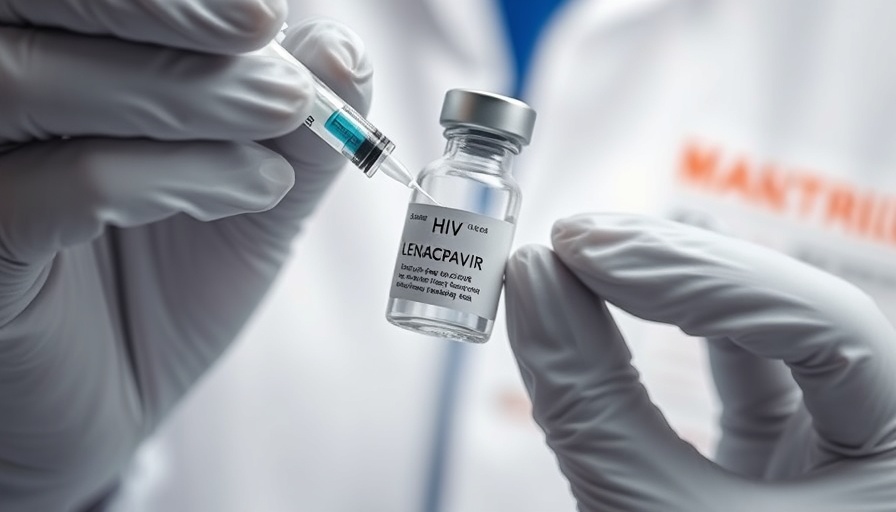
Lenacapavir: A New Dawn in HIV Prevention
Lenacapavir, a newly developed injectable medication by Gilead Sciences, offers groundbreaking possibilities in the global fight against HIV. Administered just twice a year, these injections promise 100% efficacy in preventing HIV transmission, providing a significant improvement over the daily oral PrEP options that many individuals struggle to adhere to. This advancement could change the landscape of HIV prevention significantly, especially for at-risk populations.
The Stark Reality of US Funding Cuts
Despite the promise that lenacapavir holds, its rollout faces severe threats due to recent cuts in US foreign aid, specifically impacting the PEPFAR initiative, which has been a leading force in global HIV prevention efforts for over two decades. An encouraging collaborative plan to procure lenacapavir doses for high-incidence countries is now in jeopardy as a result of funding freezes initiated under the Trump administration. Experts lament that as innovative preventative measures step forward, the crucial resources that could facilitate their implementation are also being withdrawn.
The Historic Efforts in HIV Prevention
For the past 20 years, the United States has played a pivotal role in combating HIV, funding a large majority of global programs aimed at reducing new infections and providing necessary treatments. However, with an estimated 1.3 million new infections reported in 2023, the impact of a funding halt could be catastrophic. Projections indicate that without reliable funding, we may see an increase of 8.7 million new infections in adults by 2029—including significant losses among vulnerable populations.
Global Implications and Local Responses
The halt in US funding occurs at a critical juncture. As other nations in sub-Saharan Africa, where HIV rates remain alarmingly high, brace for the potential slowdown in treatment and prevention resources, the need to foster local funding becomes essential. Increased self-sufficiency in healthcare funding not only mitigates reliance on international aid but also empowers countries to dictate their health policies based on their unique epidemiological landscapes.
The Call for Continued Investment in Innovations
Research and development in HIV treatment need to remain robust and well-funded to ensure immediate access to promising drugs like lenacapavir. The potential for lower costs and accessibility through generic manufacturing after the predicted regulatory approval could leap the barriers that currently exist in treating the affected populations. Continual investment in this area offers higher returns in public health, as a faster rollout of effective treatments can reduce costs associated with long-term HIV care and outcomes.
Looking Ahead: A Cautionary Tale
This moment represents a crucial point in international public health efforts. As innovations in HIV prevention emerge, the landscapes of funding and access must adapt in water-tight collaboration across global partners—failing to do could risk the future effectiveness of treatments that have the potential to end the HIV epidemic altogether. Action from both governments and private-sector players is crucial as we navigate these uncertain waters, seeking both to advocate for access to lenacapavir and ensure the continuation of essential prevention programs.
 Add Row
Add Row  Add
Add 




Write A Comment